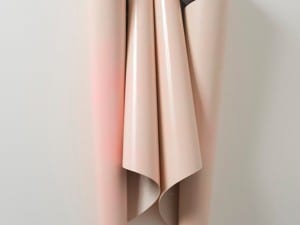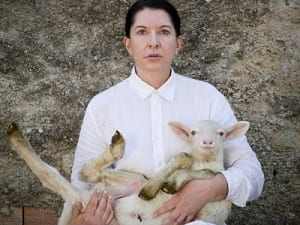Degrees of Separation at Maddox Arts explores the legacy of the Modern Masters who were pioneering geometric abstraction and kinetic art in the 1950s and 1960s. The exhibition responds to the work of these influential artists and looks at how contemporary practitioners are continuing to uses these art forms today. Artists such as Carlos Cruz-Diez, Abraham Palatnik and Julio le Parc are included in the show and the presentation of their work together develops a unique discourse between the various approaches to the genre. Aesthetica speaks to curator Laura Culpan about the development of Degrees of Separation and the future plans for Maddox Arts.
A: The artists included in Degrees of Separation hail from a range of backgrounds, countries and generations; how did you come to choosing this mix?
LC: When selecting artists there are various criteria that you look to, it’s a case of looking at the conversation between the works. I wanted them all to have a voice, although there were works that I really wanted to include, for example Marta Chilindron who is an established artist in the USA but has never before been shown in the UK – I thought it would be amazing for gallery to be able to show her for the first time. It’s also been wonderful to source original works from the 1960s by Masters such as Abraham Palatnik and Julio Le Parc. Maddox have naturally shown work by Modern masters and contemporary artists previously, and I think that abstraction in general is timeless, take Carlos Cruz-Diez’s portfolio prints – I can’t believe he’s 91 years old, the portfolio was made for his 90th birthday but the work is incredibly vibrant and fresh, really he’s as young as they come.
A: Degrees of Separation displays a traceable line between Modern and Contemporary Latin American art, why do you think this relationship is so strong?
LC: Most of the modern masters who pioneered in the 1950s and 1960s travelled to Europe and witnessed the beginnings of Modernism in Paris, and the Bauhaus too, so there’s definitely a discourse with European movements at the time – it’s not a case of this work having been made independently of what was going on in Europe. What is interesting is that those Latin artists who were the leaders of geometric abstraction went back home and continued with abstraction but made it relevant to their cultural history and contemporary architecture.
I think that artists are always looking back but, as is displayed at Maddox, rather than stay static they take it to a new level. Daniel Steegman’s work is an example of this – the leaf with the gold circles and light projection, and the mobile made from hanging twigs – which uses the geometry within nature; the amazon is his studio. Or, there’s Magdelena Fernandez whose work has an open discourse with the Modern masters; she’s very much into the physics and maths of geometric abstraction, so she’ll take a well-known Modern artwork and will move the lines to manipulate the geometry that the artist created previously. Her iPad pieces shown here are like studies for her large scale projections.
A: What did you seek to achieve from the way that the work is displayed?
LC: The exhibition is a discussion, so I was really keen to include Medina’s wall drawing and sculpture due to its wonderful conversation with Jesús Rafael Soto’s work; they’re both about the kinetics of the line, but with Soto’s prints the kinetics are happening inside your eye through the way you interpret the colours, whereas the effect of Medina’s sculptural work is the same yet more interactive as it occurs as you walk past it. Meanwhile Palatnik’s kinetic piece has a lovely conversation with Ciao Fonseca’s painting that’s essentially static but animated in the way it’s painted, and with Marta Chilindron’s Perspex sculpture which can morph between 2D and 3D formations. Then we have Rafael Reveron-Pojan’s embroidered postcards which are from a series called Homage to Gego. Gego was an amazing Brazilian architect and female artist; she worked a lot with string and wire to create drawings within her architectural space, whereas Pojan is almost flattening the space to apply embroidered abstract shapes. I love that really direct reference and honouring of the past. At the same time we’ve also shown some of Pojan’s own architectural sculptures which are very interesting aesthetically due to their 3D abstract compositions but also because there are political and social undertones to his work – they’re very much about the favela, these collapsible structures that people call home.
A: Still, would you say that as a whole, the exhibition is more about the visuals than politics of Latin American art?
LC: Independently there are political subtexts, but this isn’t the point of the exhibition, which is a response to the geometric abstraction that was so prevalent in the 1950-60s. Naturally Maddox arts have shown contemporary artists and Modern masters in previous exhibitions, and this was an opportunity to really examine within geometric abstraction the influence of the older upon the younger generation – and how the younger generation are leading abstraction in their own very contemporary way.
A: What’s next for Maddox Arts?
LC: The next exhibition will be (Un) real, which looks at abstraction in contemporary photography. It’s the first photography exhibition that the gallery has shown and brings together nine artists from all over the world and works from the 1940s to today. The premise of the exhibition is that all of the images have an abstraction but haven’t undergone digital manipulation, instead there’s a layer of artistic hand that goes on behind the image being set up and taken which allows for an abstraction. Georges Rousse is the main point of inspiration, I’ve been following his work for a long time, and I love finding a piece of work that you make an assumption about and are then proved wrong. He’s like the godfather of single-point perspective, he takes derelict space and literally paints into them, but looking at his works you’d probably assume that there’s been some kind of digital intervention with an abstract shape applied later on. We’re showing two large pieces of his work, and what I want for the exhibition is that the reality is different from your expectation.
Degrees of Separation, until 14 September, Maddox Arts, 52 Brook’s Mews, London W1K 4ED.
Credits
1. Daniel Medina, Reja Series (dispositivo cinetico-social), Variable Dimensions, Steel and vinylic paint, 2014.





